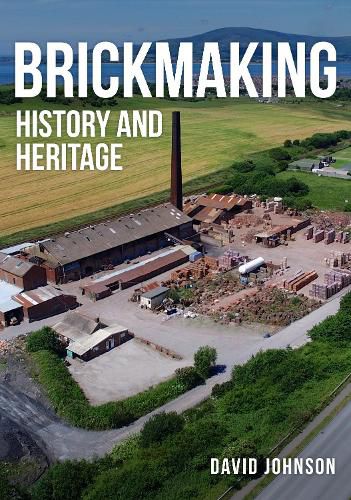Readings Newsletter
Become a Readings Member to make your shopping experience even easier.
Sign in or sign up for free!
You’re not far away from qualifying for FREE standard shipping within Australia
You’ve qualified for FREE standard shipping within Australia
The cart is loading…






Across much of the country buildings have been made of brick, rather than stone, from the Roman period onwards. High-status buildings of the Tudor and Stuart eras were often built of clay brick, but it was only in the nineteenth century that the use of brick in rapid industrial and urban development saw a massive increase in brick production. Mechanisation of the various processes, along with the development of new kiln technologies, enabled this increase in output. Age-old clamp kilns were replaced by kilns capable of turning out thousands of bricks per week. Because bricks had a very low individual unit cost, and because so many were needed for each new building, brickmaking was always a localised industry: wherever suitable raw materials occurred close to the intended market, brickworks would spring up. The thousands of sites that existed at one time or another have mostly been swept away and brickmaking now is concentrated in relatively few sites.
This book explores the history of the brickmaking industry and looks at production sites from the past and the present.
$9.00 standard shipping within Australia
FREE standard shipping within Australia for orders over $100.00
Express & International shipping calculated at checkout
Stock availability can be subject to change without notice. We recommend calling the shop or contacting our online team to check availability of low stock items. Please see our Shopping Online page for more details.
Across much of the country buildings have been made of brick, rather than stone, from the Roman period onwards. High-status buildings of the Tudor and Stuart eras were often built of clay brick, but it was only in the nineteenth century that the use of brick in rapid industrial and urban development saw a massive increase in brick production. Mechanisation of the various processes, along with the development of new kiln technologies, enabled this increase in output. Age-old clamp kilns were replaced by kilns capable of turning out thousands of bricks per week. Because bricks had a very low individual unit cost, and because so many were needed for each new building, brickmaking was always a localised industry: wherever suitable raw materials occurred close to the intended market, brickworks would spring up. The thousands of sites that existed at one time or another have mostly been swept away and brickmaking now is concentrated in relatively few sites.
This book explores the history of the brickmaking industry and looks at production sites from the past and the present.